衣索比亞比爾
出自 MBA智库百科(https://wiki.mbalib.com/)
衣索比亞比爾(Ethiopian Birr 標準符號:ETB)
目錄 |
ISO 4217 Code:ETB
User(s):Ethiopia
Inflation:10.5%
Source:The World Factbook, 2006 est.
Subunit:1/100 santim
Symbol:Br
Coins:1, 5, 10, 25, 50 santim
Banknotes:1, 5, 10, 50, 100 birr
Central bank:National Bank of Ethiopia
Website:http://www.nbe.gov.et
The birr is the unit of currency in Ethiopia. Before 1976, dollar was the official English translation of birr. Today, it is officially birr in English as well.
In 1931, the Emperor of Ethiopia formally requested that the international community use the name Ethiopia (as it had already been known internally for at least 1600 years) instead of Abyssinia, and the issuing Bank of Abyssinia also became the Bank of Ethiopia. Thus, the pre-1931 currency could be considered the Abyssinian birr and the post-1931 currency the Ethiopian birr, although it was the same country and the same currency before and after.
First birr, -1936
In the 18th and 19th centuries, Maria Theresa thalers and blocks of salt called amoleh served as currency in Ethiopia. Birr (literally meaning "silver" in Ge'ez and Amharic) was the local name for the Maria Theresa thaler.
Menelik II began issuing coins in 1894. The birr, equivalent to the Maria Theresa thaler, was divided into 20 ghersh or guerche (the name coming from the Ottoman Empire's qirsh) or 32 bessa. Denominations issued were 1⁄100 and 1⁄32 birr, 1 ghersh, ⅛, ¼, ½ and 1 birr. Gold coins were issued in denominations of ¼, ½ and 1 werk. In 1903, the currency system was changed to 16 ghersh = 1 birr. Banknotes were issued by the Bank of Abyssinia from 1915, with the name thaler being used for birr in the French text on the notes.
In 1931, Ethiopia decimalized, with the birr equal to 100 metonnyas (often written matonas). Coins were issued in denominations of 1, 5, 10, 25 and 50 metonnyas. The Bank of Ethiopia issued notes in 1932 in denominations of 1, 5, 10, 50, 100 and 500 birr (thalers).
1936-1945
In 1936, following the occupation of Ethiopia by Italy, the Italian lira was introduced at a rate of 1 birr = 5 lire. In 1938, the Italian East African lira was introduced in banknote form only. Liberation in 1941 brought the introduction of the British East African currency, the shilling. This replaced the lira at a rate of 24 lire = 1 shilling.
Second birr, 1945-
The birr was reintroduced in 1945 at a rate of 1 birr = 2 shillings. The name Ethiopian dollar was used in the English text on the banknotes. It was divided into 100 santim (derived from the French centime). The name birr became the official name, used in all languages, in 1976.
Coins
Dates
Recent Coins have been issued in three series, dated 1936, 1969, and 1996-8 in the Ethiopian calendar. Dates on the Ethiopian calendar are roughly 8 years behind those on the Western calendar, so these correspond to 1944, 1977, and 2004-2005 AD. The following denominations were minted:
- 1 santim (no EE1996 issue)
- 5 santim (latest issue dated EE1998)
- 10 santim (latest issue dated EE1996)
- 25 santim (or "semuni"; latest issue dated EE1996)
- 50 santim (latest issue dated EE1996)
The dates, like the rest of the legend, appear in Amharic, the official language of Ethiopia.
Besides having almost all the legends in Amharic, there are two features which help to immediately identify an Ethiopian birr. Early dated coins, those dated before EE1969, feature a crowned rampant lion holding a cross. This can be seen in the picture to the right. Later dated coins, those dated EE1969 or after, picture the head of a roaring lion, with a flowing mane.
Coins were struck at several mints, including Paris, Berlin, and Addis Ababa. Coins without mintmarks were generally struck at Addis Ababa. The coins struck at Paris have either the mintmark "A" with the cornucopia and fasces privy marks, or the cornucopia and torch privy marks without the "A".
Banknotes
Banknotes have been issued in the following series:
| Series | Denominations |
| 1945 | 1, 5, 10, 50, 100 and 500 birr |
| 1961 | 1, 5, 10, 20, 50, 100 and 500 birr |
| 1966 | 1, 5, 10, 50 and 100 birr |
| 1976 | 1, 5, 10, 50 and 100 birr |
| 1991 | 1, 5, 10, 50 and 100 birr |
| 1997 | 1, 5, 10, 50 and 100 birr |
| 2003 | 1, 5, 10, 50 and 100 birr |
| 2006 | 1, 10, 50, 100 birr. |
The monetary system of Ethiopia is decimal based, with the primary unit of Ethiopian money being called the Ethiopian Birr. The fractional unit, Santim, is alternately listed in various sources as Centime and Cent. The names and relative values of the coins depicted above are, from left to right:
- One Santim - 1/100 of a Birr
- Five Santim - 5/100 of a Birr
- Ten Santim - 10/100 of a Birr
- Twenty-five Santim - 25/100 of a Birr
- Fifty Santim - 50/100 of a Birr
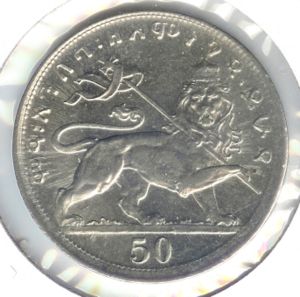








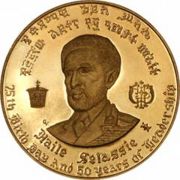
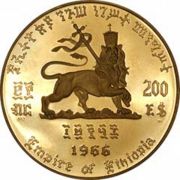
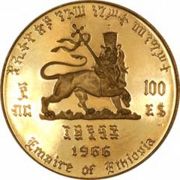
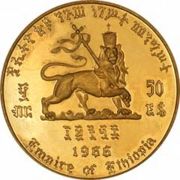
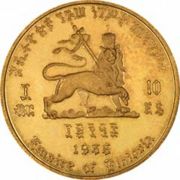
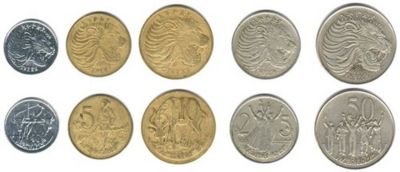






這個匯率表實什麼玩意,差了十萬八千里